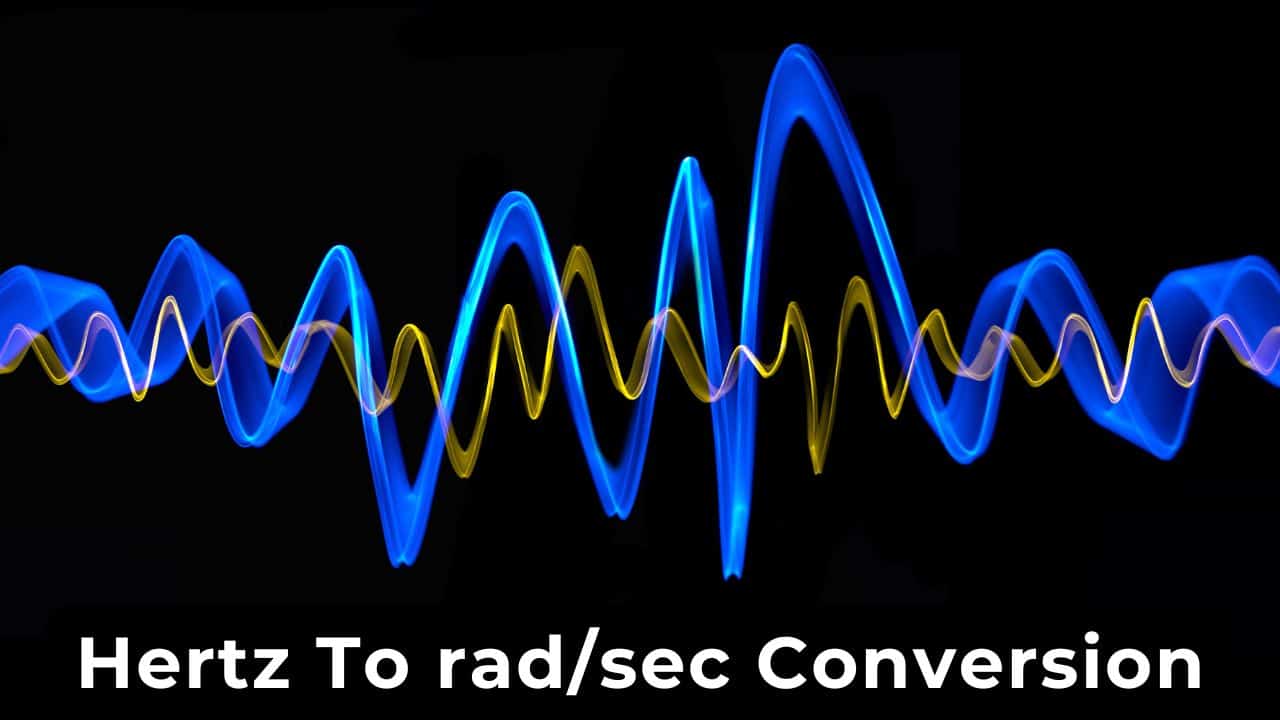
Hertz ↔ Rad/Sec Conversion
Let’s explore the fascinating world of frequency measurements and learn why converting between Hertz and radians per second is so important in physics!
What is Frequency? (Hertz – Hz)
Frequency is one of the most fundamental concepts in physics. Think of it as “how often something happens in one second.”
Definition: Frequency (measured in Hertz) tells us how many complete cycles or oscillations occur in exactly one second.
Real-World Examples:
- Sound Waves: A musical note A4 has a frequency of 440 Hz – meaning the air vibrates 440 times per second!
- Light Waves: Red light has a frequency of about 430 trillion Hz (430 THz)
- Electricity: Household electricity in most countries oscillates at 50 or 60 Hz
- Radio Waves: FM radio stations broadcast at frequencies like 101.5 MHz (101.5 million Hz)
🌀 What are Radians per Second? (rad/s)
Angular frequency (radians per second) describes rotational motion – how fast something spins or rotates.
Key Concept: While Hertz counts complete cycles, radians per second measures the angle covered per second in circular motion.
Understand Radians:
Imagine a pizza cut into slices. One complete circle = 2π radians ≈ 6.28 radians
- Quarter circle (90°) = π/2 radians ≈ 1.57 radians
- Half circle (180°) = π radians ≈ 3.14 radians
- Full circle (360°) = 2π radians ≈ 6.28 radians
Here’s where the magic happens! The relationship between these two units comes from the geometry of circles.
The Bridge Formula:
ω = 2πf
Where: ω (omega) = angular frequency (rad/s), f = frequency (Hz)
Why 2π?
Because one complete cycle (1 Hz) means going around a full circle, which is exactly 2π radians!
Let’s Think About It:
- If something completes 1 cycle per second (1 Hz)…
- That means it travels through 1 complete circle per second…
- One complete circle = 2π radians…
- So it moves at 2π radians per second!
Why This Conversion Matters
Engineering
Engineers need both units: Hz for electrical systems, rad/s for mechanical rotating systems like motors and turbines.
📡 Electronics
Circuit designers use Hz for AC frequency, but when analyzing phase relationships, rad/s makes calculations much easier.
Acoustics
Sound engineers work in Hz for human perception, but use rad/s for mathematical analysis of wave interference and harmonics.
Physics Research
Many physics equations naturally use rad/s, making calculations cleaner and more intuitive for rotational systems.
Practice Problems for Students
Problem 1: Music Note
Question: The musical note Middle C has a frequency of 261.6 Hz. What is its angular frequency?
Click to see solution
Solution: ω = 2πf = 2π × 261.6 = 1644.6 rad/s
Explanation: We multiply by 2π because each complete sound wave cycle corresponds to 2π radians of phase.
Problem 2: Spinning Wheel
Question: A bicycle wheel spins at 31.4 rad/s. How many revolutions per second is this?
Click to see solution
Solution: f = ω/(2π) = 31.4/(2π) = 5 Hz = 5 revolutions per second
Explanation: We divide by 2π to convert from radians per second back to cycles (revolutions) per second.
